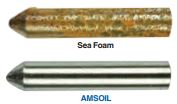How to Store Your Lawnmower in Winter Proper storage ensures your lawn equipment will run well for years. September 26, 2023 Winter is on the horizon and it’s time to store your lawnmower and other lawn and garden equipment through the colder months. The following tips will help you maximize the life and performance of […]
You are browsing archives for
Tag: corrosion
Save Every Drop of Horsepower with UPPER...
AMSOIL UPPER CYLINDER LUBRICANT: I use it and it works! Now on the market for about a year: AMSOIL Upper Cylinder Lubricant (UCL) is the latest addition to the gasoline additive lineup. It delivers more lubricity than the competition and battles ethanol-related corrosion. Fuel Additive Product Overview Upper cylinders are one of the toughest areas […]
A closer Look At Engine Sludge
Preventing Causes of Engine Oil SLUDGE Brands matter, quality matters and frequent oil changes will not alter this. It’s all based on the additive quality and it does effect the price. Engine sludge occurs when oxidized oil and contaminants build up on engine surfaces. It can restrict the flow of oil to the point of […]
Small engine won’t start? Identifying th
Small engine won’t start? Bad gas is the number-one reason, and here’s how to prevent it. Len Groom | TECHNICAL PRODUCT MANAGER, POWERSPORTS In northern Minnesota, where I live, the temperature occasionally breaks 80ºF (27ºC) in the summer. When it does, it’s time to fire up my Jet-Skis* and hit the lake. The last thing […]



